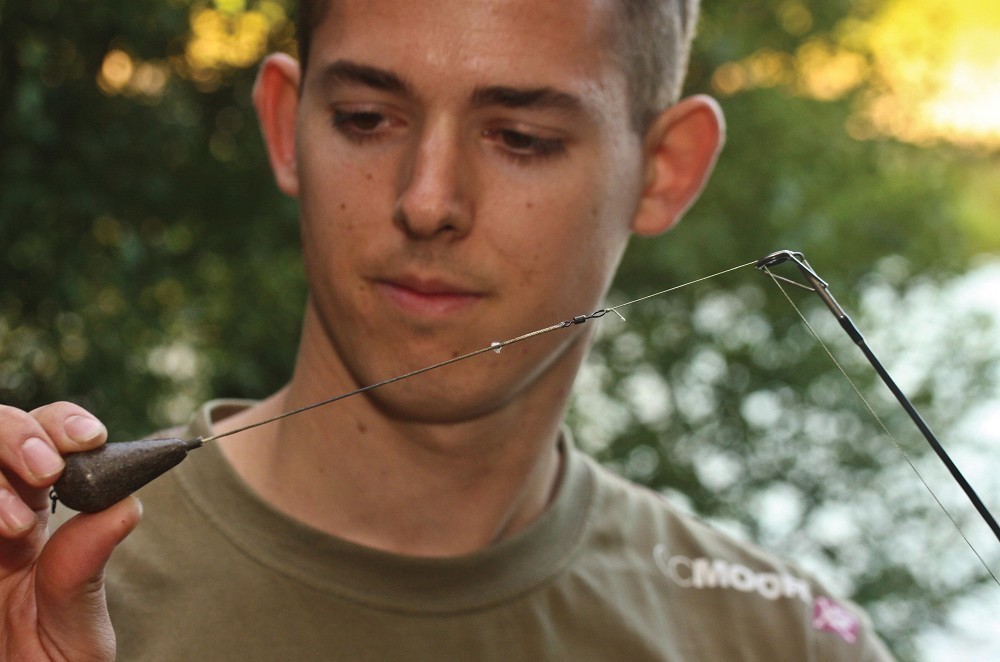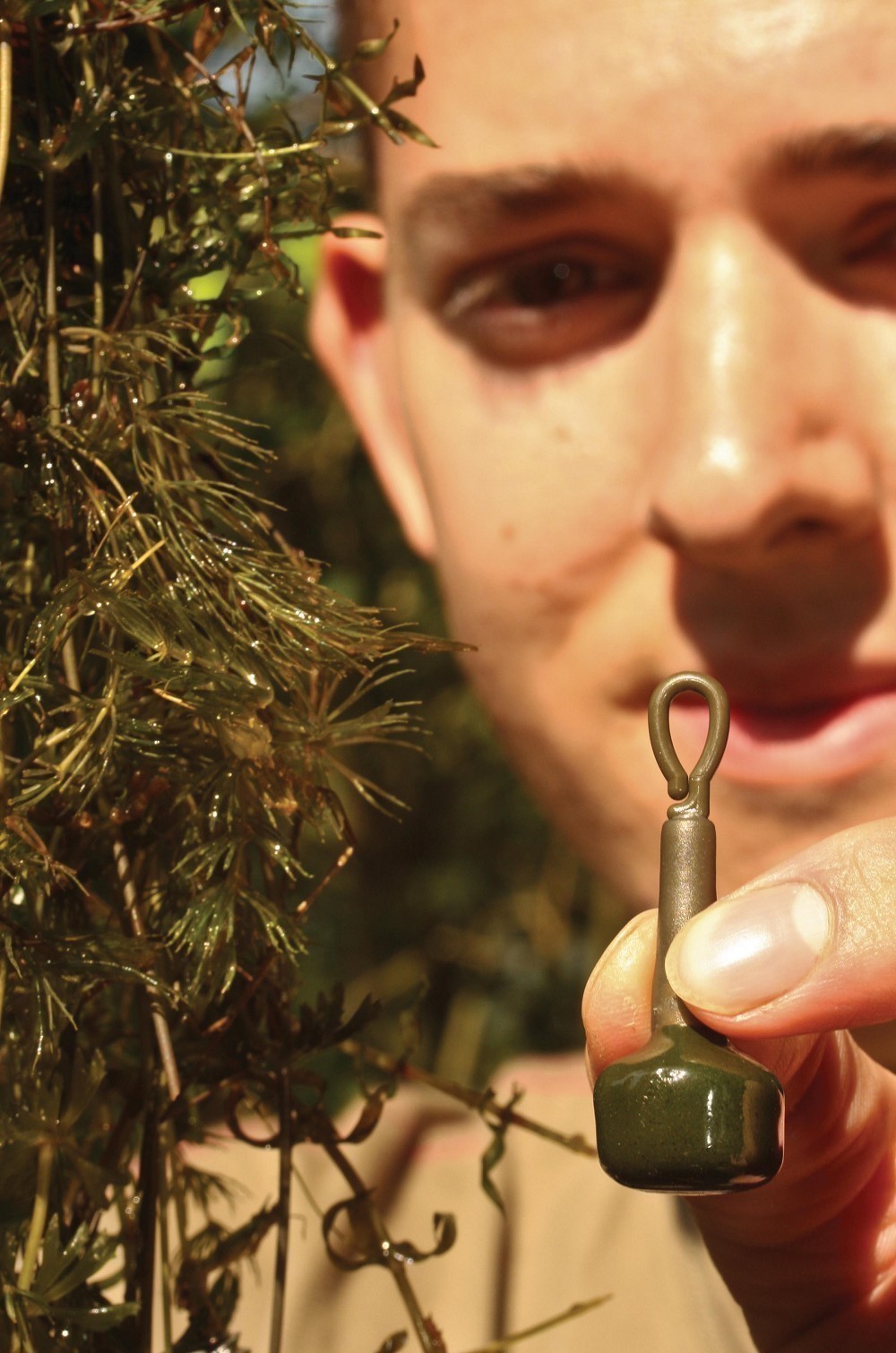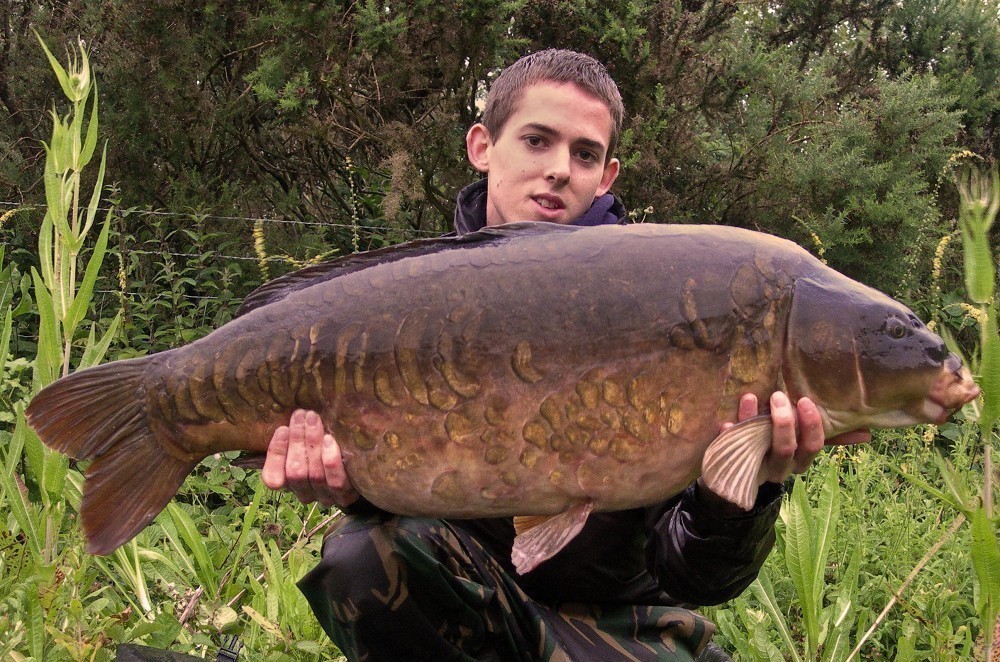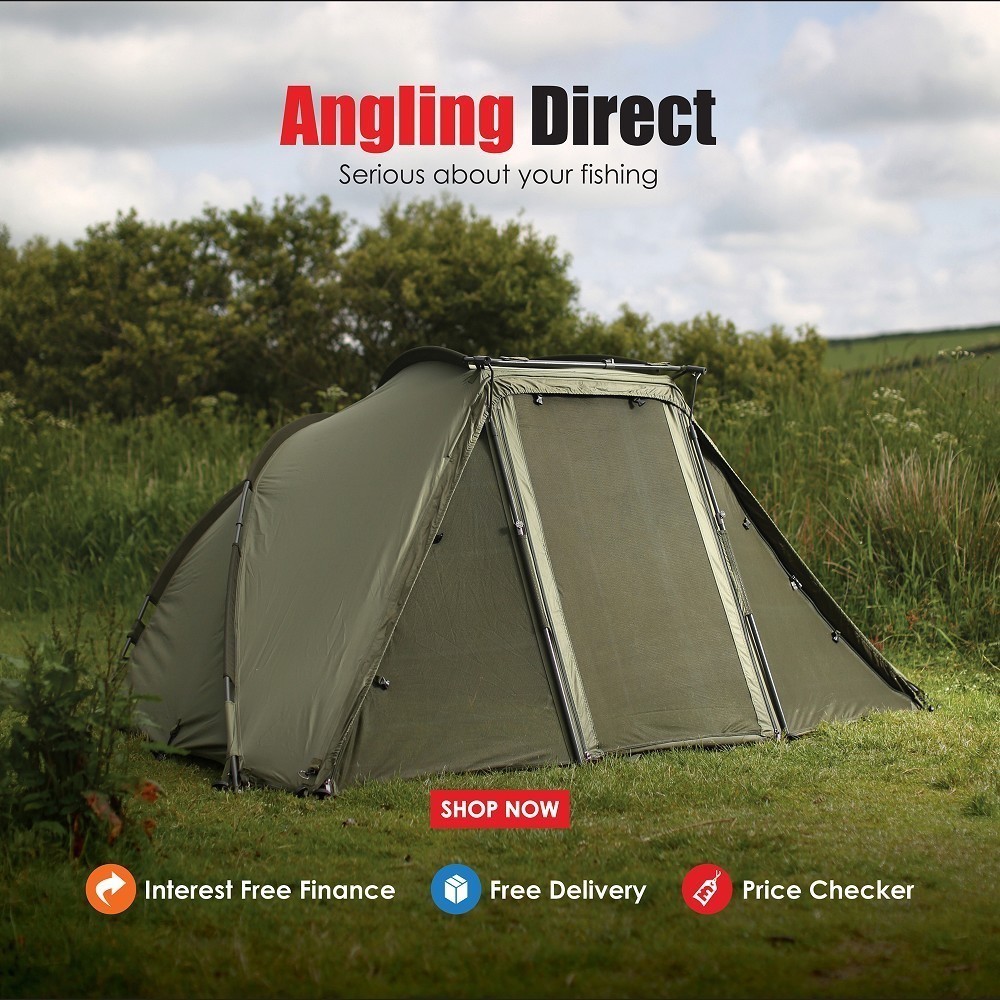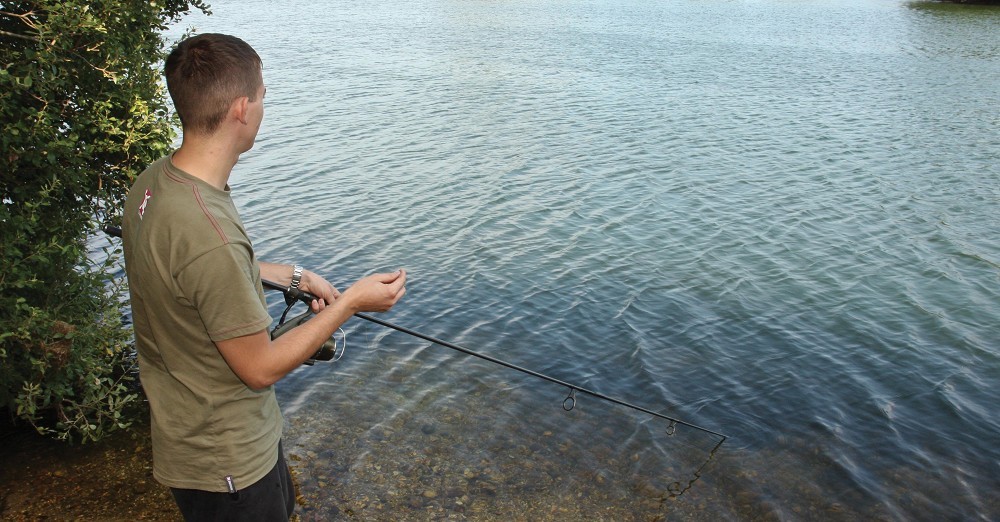
How to achieve line lay & bite indication perfection
Thanks to Duncan Maclean
Line lay is an important piece of the jigsaw which is often neglected or not given enough consideration. All too often I see anglers cast out, quickly clip on the bobbin, a few turns of the spool to get the bobbin the same level as the other two rods, sit back, job done. Now in some situations that may be all is required, or in fact possible to get the optimum line lay, but it is something which should always be at the forefront of your mind when approaching a situation, and unfortunately isn’t as simple as tight line or slack line.
I remember reading something a while back from a high profile big fish angler who talked of things in percentages, and is a view which I am in total agreement with and is well and truly ingrained in my angling. Location for example will be the greatest factor influencing whether you will catch, attributing to a large percentage, perhaps 70% for example. Things like bait, bait application and disturbance are other major factors, also accounting for a large percentage, say 20%. Then we come to other factors such as subtleness of end tackle, rig choice, hook sharpness, line lay, choice of line, bite indication to name a few. All of these factors individually may not seem to matter too much; each factor may only contribute 1-2%, however collectively start to add up and become very important. If you start to realise this and spend time getting every single one of these ‘smaller’ factors right it starts to make a big difference. It’s all about increasing those percentages in your favour! Line lay I suppose may fall into the ‘smaller factor’ category in relative importance for highly stocked, coloured waters. However, on highly pressured, gin clear circuit waters it can become a massively important factor and make all the difference between catching and blanking.
In order to get the best line lay, firstly you need to be able to read the lakebed. As I’ve mentioned previously, I spend a vast amount of time when I’m new to a water with a marker rod and lead, mapping out swims. The more detail the better. In large, lowly stocked pits where it is impractical to map out every swim, start by finding the fish and understanding their movements and then map out a few of the key swims in these areas. Learning to do this is something which comes with experience and enables even the largest of pits to be ‘shrunk’ to several key swims and zones.
Something which perhaps is worth mentioning, is how I go about mapping out a swim. Rod-wise, I have never been a fan of conventional marker rods. Most are far too soft and absorb all the vibrations from the lakebed which is the last thing you want. I have settled on using a Century spod rod. In my view it is absolutely perfect for use as a marker rod; it is more than capable of putting a lead 150yds plus and perfectly crisp enough so that all the vibrations travel straight up the rod and are not absorbed by a soft tip. An added bonus of this of course is that you no longer need to buy or carry a spod and marker rod, the one rod does both perfectly. In contrary to many anglers I don’t use a marker float, just a lead. A technique which is crucial to mapping out a swim (and angling as a whole) is learning to trap the line when the lead hits the water to feel for the drop. Not only will you soon be able to learn what the lakebed is simply from the drop but also the depth from the time it takes to hit the lakebed. One of the main reasons for not using a marker float is that on weedy waters as soon as you drag the set-up across even the lightest weed the whole thing becomes a weed ball and prevents you from feeling anything more from that cast. In contrast to this, when using just a lead, even if the lead gathers some weed, so long as the weed isn’t too heavy, a quick jerk of the rod will be sufficient to pull the lead free of the weed and carry on pulling back; enabling you to feel an accurate representation of the lake bed. Another reason why I choose not to use a marker float is that if you are actually fishing I have no doubt in my mind that marker floats are prolific for spooking carp! A luminous yellow/orange maker float dragged past carp undoubtedly sends them into panic and will be quick to leave the area, which on lowly stocked pits can be game over.
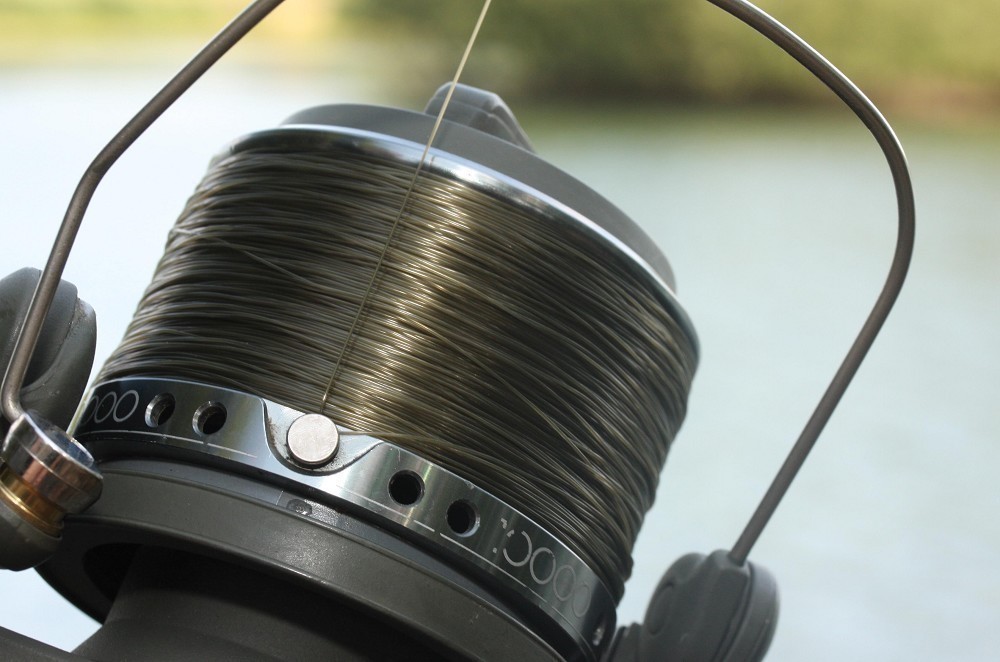 Using your line clip when casting will straighten the line as the lead reaches the spot, this will remove any bow in the line and aid in achieving a good line lay
Using your line clip when casting will straighten the line as the lead reaches the spot, this will remove any bow in the line and aid in achieving a good line layA balancing act
Once you understand what you are fishing over that is the main battle, now it’s just about being smart and adapting your angling to the situation, because no two situations will be the same.
You might find that it makes more sense fishing a spot from a different swim in order to get a better angle and line lay, and is something you might not have thought of had you not taken the time to read the lakebed. The important thing to remember however, is that it is a balance between optimum line lay and optimum bite indication, so whilst getting the line lay right is important, it should not impact the bite indication so much that it becomes a risk. The ideal is to have the line sunk to match the contours if the lakebed yet tight enough to register any small movements at the lead end.
I’ll give an example which should explain what I mean by that. A couple of seasons ago I was fishing a deep gravel strip which stretched around 20yds surrounded by thick weed. The weed up to the mark was around 5ft long in 12ft of water. The water was ultra clear and carp highly pressured so in order to fish the spot effectively I needed to get the line sunk as best as possible. I’d decided to use a backlead into the weed and fish ultra-slack lines to ensure the line wasn’t too blatant over the gravel strip. Later that same day I received a strange take, the bobbin rose off the deck by about an inch then sank back down. ‘Liner’ I thought. About five minutes later the bobbin rose to the top and stayed there and so I decided to strike. However, I had to reel around 20yds of line in to wind down to the fish and when I finally got to the fish, it was literally around 50yds to the left of the spot and a lot closer in. After a few lunges of the tip it weeded solid. After around 10 minutes the hook pulled. No doubt I had achieved excellent line lay by fishing slack lines and backleading, however the consequence of this had been poor bite indication. This had given excessive amounts of play in the line for the carp to kite deep into the surrounding weedbeds with only a tiny indication on the bobbins. So in this instance I hadn’t got the balance quite right, the bite indication wasn’t sufficient given the situation. I would have been better to perhaps not use a backlead given the amount of weed and not slacken off to the extent that I could no longer register a drop-back on the bobbin. This would have improved the bite indication and enabled me to be straight in contact with the carp and hopefully prevent it from finding refuge in the thick weedbeds.
This, and several other similar occurrences has lead me to be extremely cautious of slack-lining to the extreme that the bobbins lie flat on the deck on weedy waters. For the majority of the time I like to fish fairly slack lines yet still just tight enough to register backdrops clearly, which is why I favour using fairly weighty bobbins, but fished just tight enough to be able to register a drop-back but no tighter. There are of course circumstances where the area maybe clear of weed/snags and having poor bite indication doesn’t really matter because the carp can kite for a relatively long way in any direction and come to no trouble so in this case by all means go for the backleading and ultra-slack line bobbins on the floor approach.
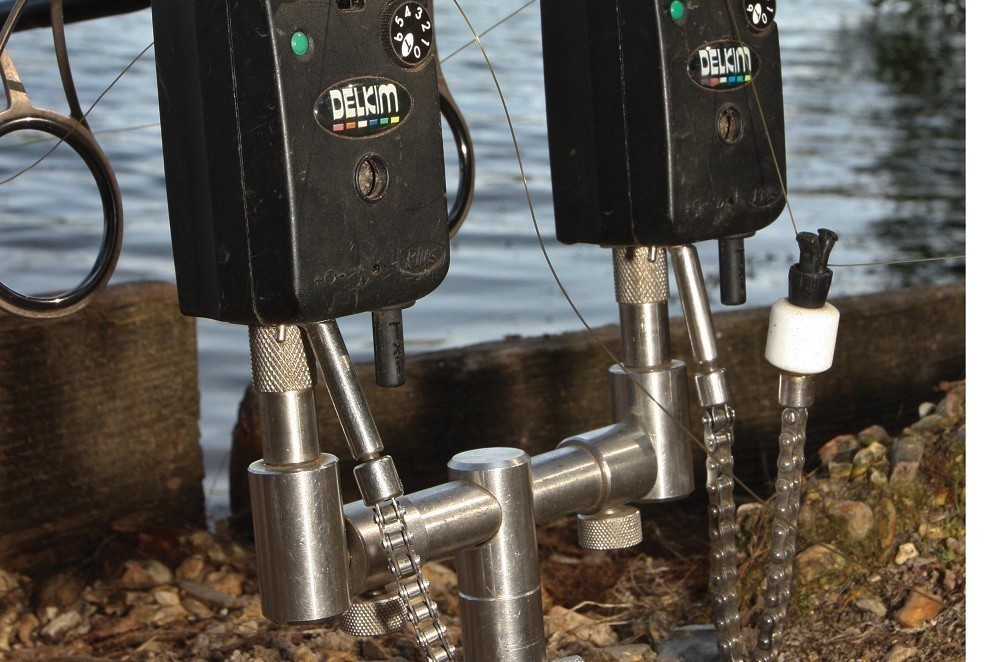 When fishing slack lines, leaving the line limp amongst the rings for a few minutes once on the rests will ensure that it sinks fully before attaching your bobbin
When fishing slack lines, leaving the line limp amongst the rings for a few minutes once on the rests will ensure that it sinks fully before attaching your bobbinBackleads
Backleading is, however, an extremely useful tool if used correctly and I use extensively in my fishing. In swims where the margin drops off to a relatively uniform depth backleads are ideal, as the line will be pinned down all along the bottom to the rig. However, if the lakebed depth varies a lot and is like an egg box, consider whether using a backlead will actually improve the line lay near the rig where it really matters, as it may not do; and may in fact just decrease the bite indication which as seen in my example can become a risk.
I have used practically every backlead on the market in my search for the perfect backlead and up until recently it simply didn’t exist. I’m sure those of you that have used backleads will be familiar with the frustrations of clipping it on the line and then during the process of bouncing it down the line to get it a sufficient way out it pings out of the clip and into the water, and they’re not exactly cheap! Now, however, Korda have corrected that problem and the rubber now slides over the line clip to make it impossible for the line to come back out of the clip whilst sliding the backlead down the line. In addition to this the lead base is connected by a rubber sleeve that will release if it gets snagged but doesn’t fall off when you don’t want it to! Finally, my prayers have been answered!
The weight of the backlead is also something which should be considered. Too heavy and sliding the backlead down the line can move the rig and can also cause problems when playing a carp as it can dislodge the hook as it glides and bounces down the main line during the fight. Too light and the backlead isn’t sufficiently heavy to hold the line down tight to the lakebed if you choose to fish with the line tight enough to register a backdrop. I have found the optimum weight is 0.5oz and is suitable for nearly all situations.
The right main line
Choosing a main line can also be quite daunting with the number of lines on the market these days. Again, I view this as a balance, ideally you want a nice subtle, supple line which casts really well and sinks down amongst the contours of the lakebed. In addition to this you want an ultra tough line that will withstand abrasion from snags and rocks, strong enough to extract carp from the heaviest of weedbeds.
Now, there is no wonder line which is perfect in every respect, there will always be some compromise. However, strength is something which has to be number one priority and is crucial that you use a main line strong enough for the venue you are targeting. For years I have used 12lb (0.35mm) GR60 which is an ultra-tough superb all round line, it’s not the most supple line available on the market but isn’t bad, but its toughness, strength and durability really is superb and the drab green colour blends in really well so is a great choice of line. Another line I have been really impressed with and am using currently is the new Korda SUBline in brown. Like the GR60, it is not ‘the most’ supple line available but nevertheless it is limp and casts really well. It has all the great properties of the GR60. The colour is also perfect, although it is classed as brown; it is really a drab olive and just the colour I like to go for when choosing a main line. Strength-wise the 12lb is ideal for the majority of big fish angling (0.35mm) however at the moment you can see I’ve stepped up to 15lb (0.40mm). That’s because Roach Pit isn’t the main water I’m targeting at the moment and the lake I’m fishing has savage boulders and snags and so the extra thickness gives me a bit of extra confidence! I have a line I can rely on in the harshest of circumstances.
Fluorocarbon is a main line which definitely has its uses because it sinks like a stone and visibility-wise it is second-to-none, as it has refractive indices close to water. This means it refracts light in a very similar manner so effectively blends in extremely well when submerged. However, as with all lines there is some compromise, the main compromise of fluorocarbon being that it is fairly rigid and just doesn’t have the suppleness of nylon main lines. This makes it pretty terrible for distance fishing, as it clatters through the rod rings. They have come on a great deal and some of the main lines on the market at the moment have got a lot better, but still in my view are not ideal for big pit fishing where accurate distance casting is essential. However, on small waters where distance fishing is not required it is definitely worth considering fluorocarbon.
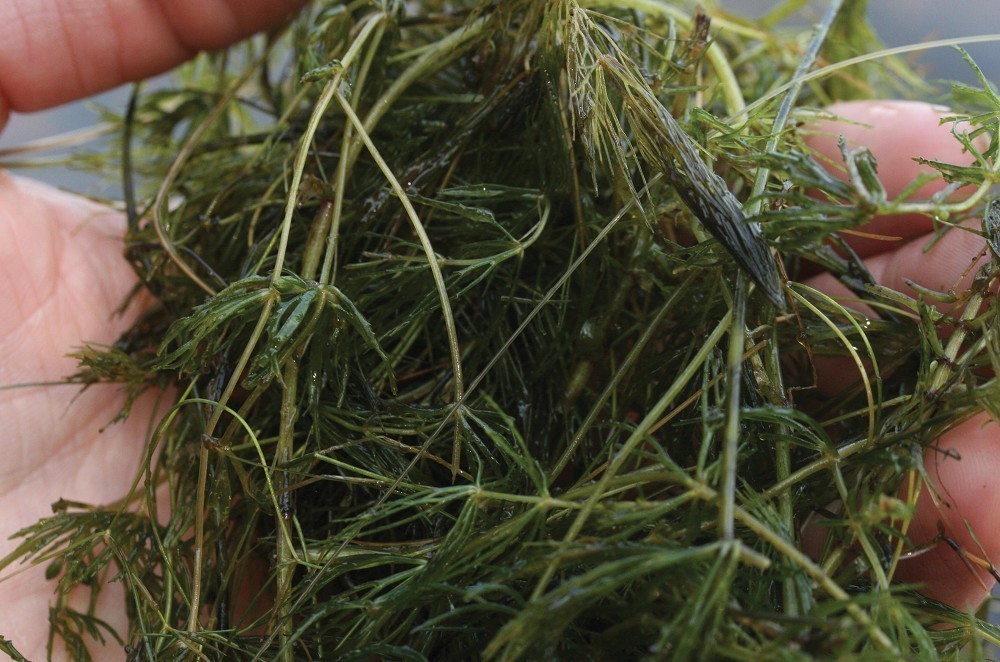 Duncan likes his main line to blend in with its surroundings. SUBline does this perfectly and aids massively in line concealment
Duncan likes his main line to blend in with its surroundings. SUBline does this perfectly and aids massively in line concealmentTerminal tackle
Another crucial aspect to consider is the actual end tackle, as there’s little point in having great line lay if the rig end isn’t up to scratch! Now, this is a vast topic which I could write a great deal on, but I’ll save that for another time and just mention it briefly! Over the last couple of years this area of the industry really has boomed and the choice of end tackle available now is simply staggering. This is a huge benefit to an angler as it enables you to completely customise your rigs and leaders to match what you’re fishing over. So rather than carrying one colour hooklength and leadcore, I now have a whole array of colours enabling me to customise my end tackle to match any situation I find myself in, and if you take the time to do this properly, every time, it’s definitely an edge over other anglers and another percent in the bag!



